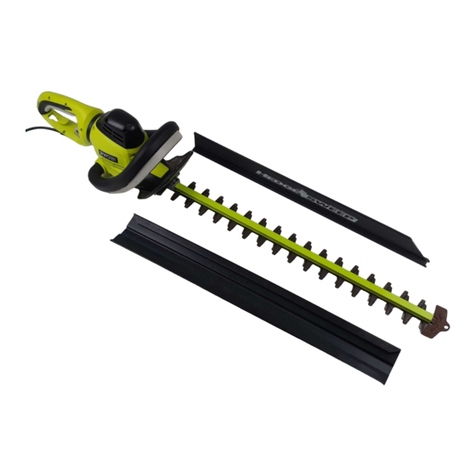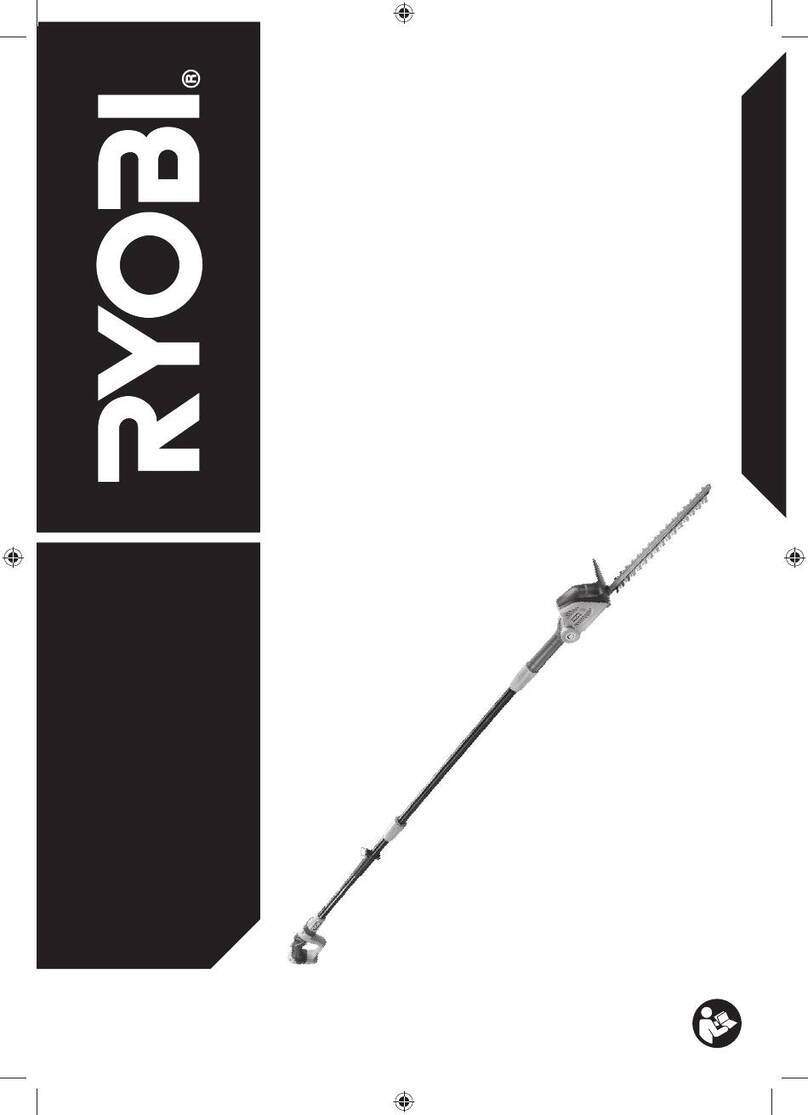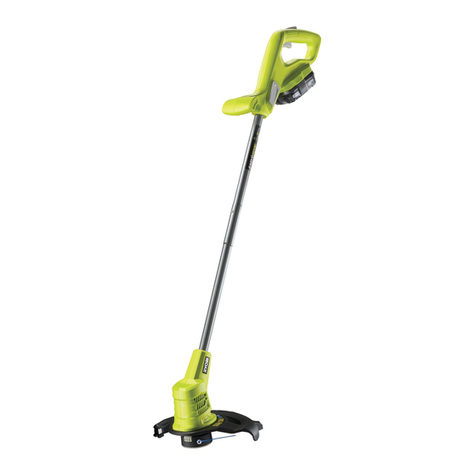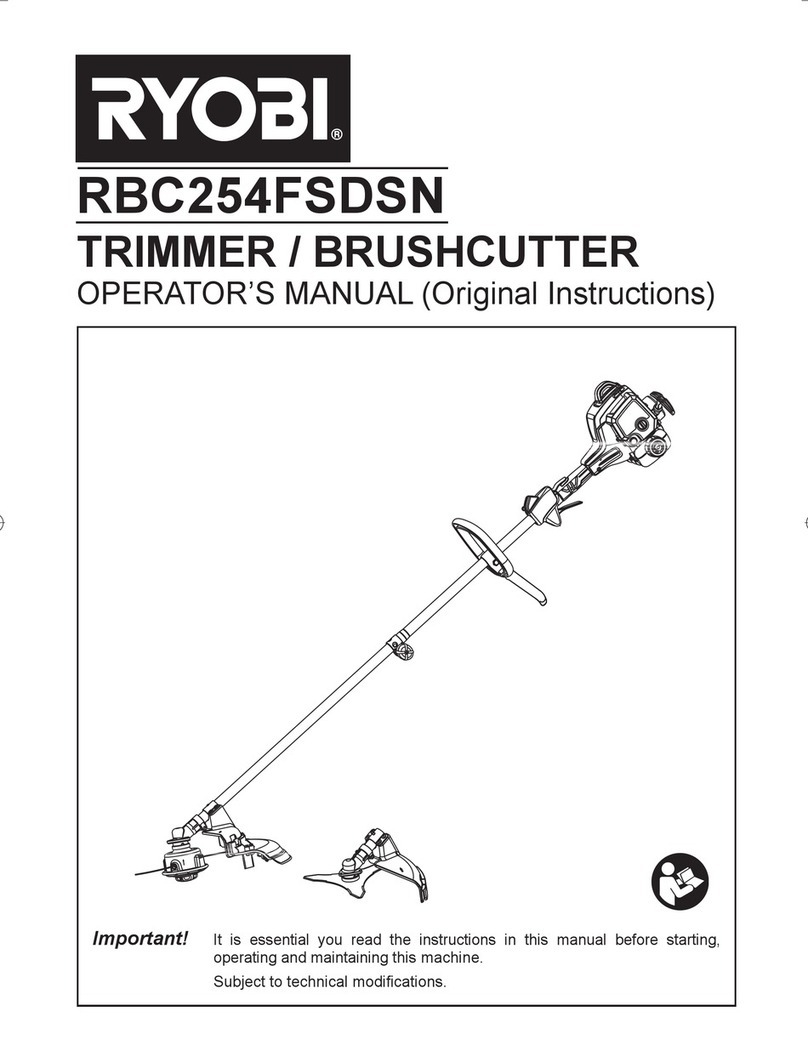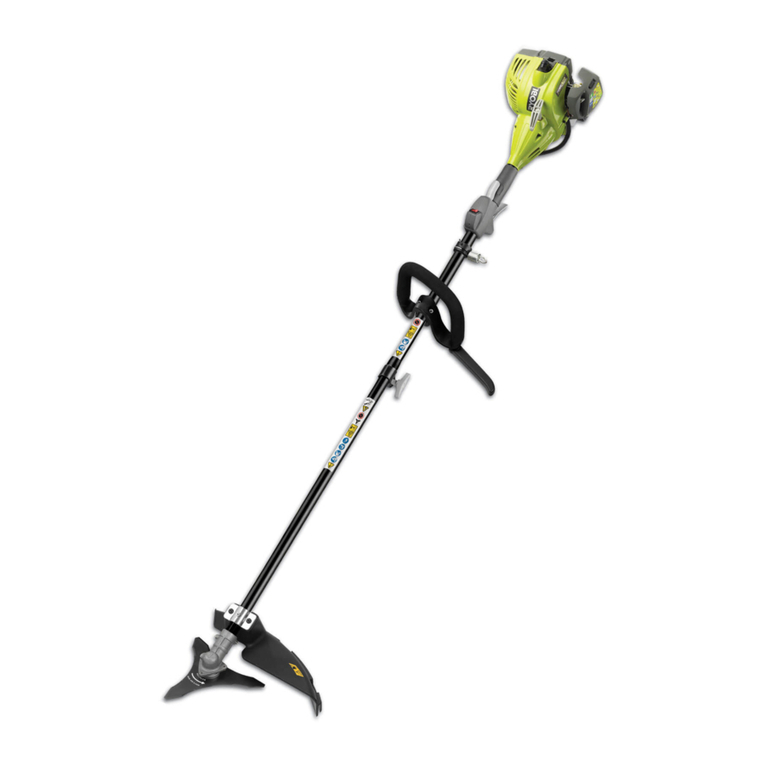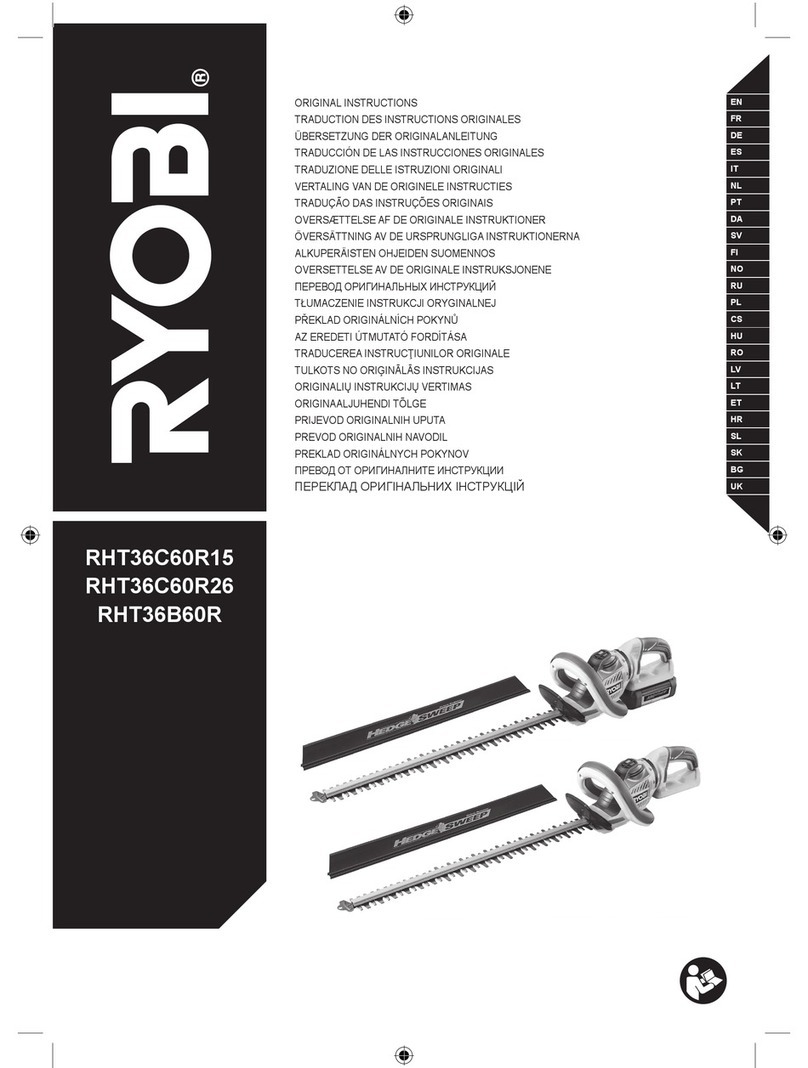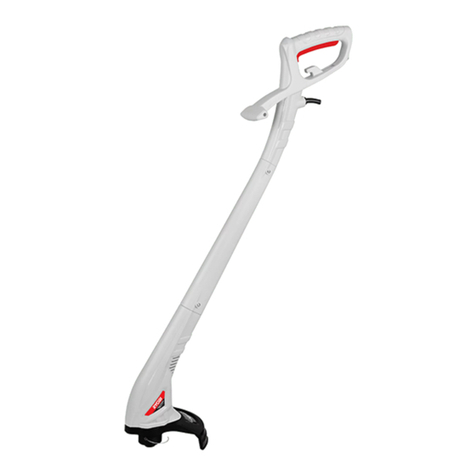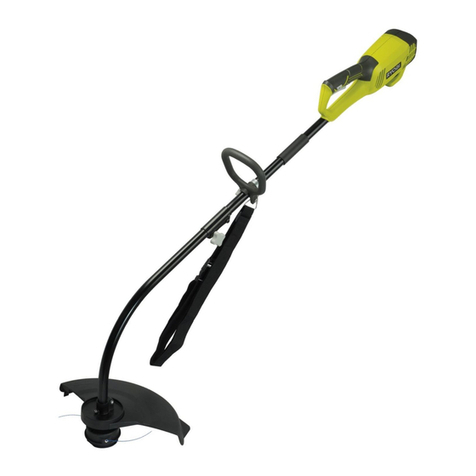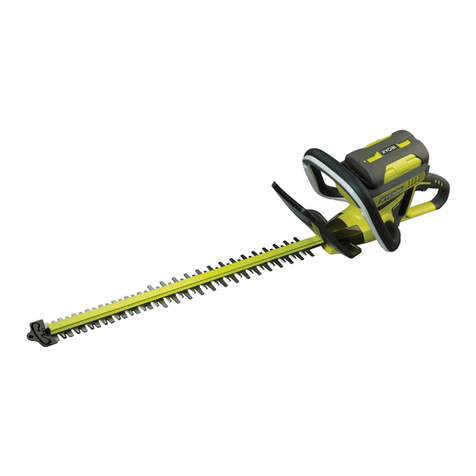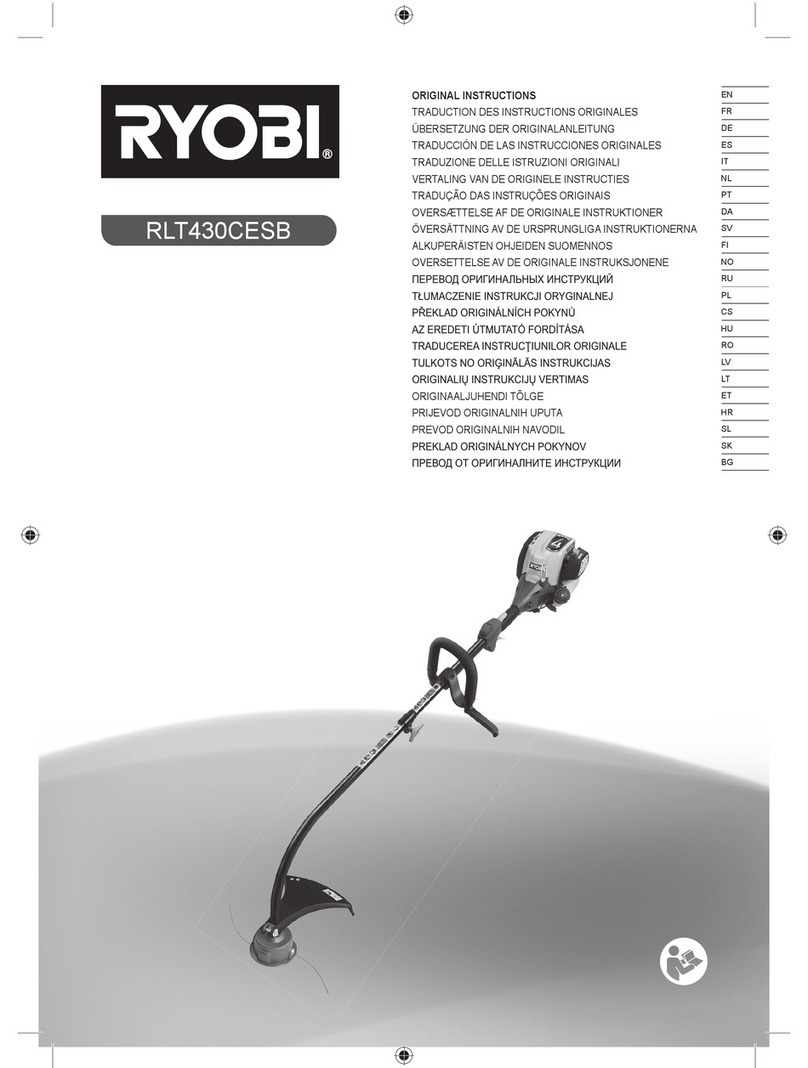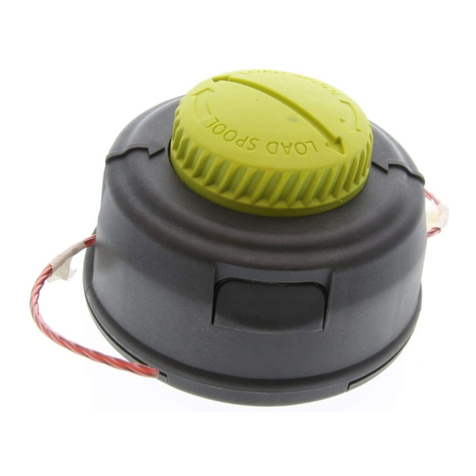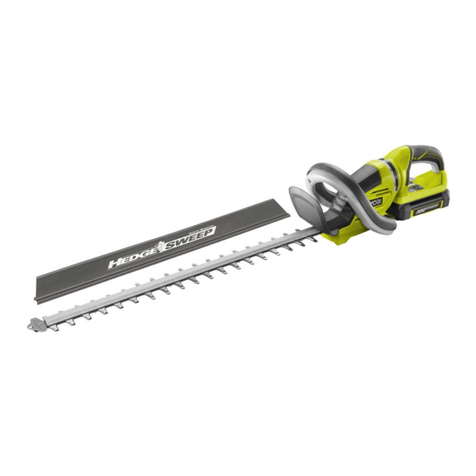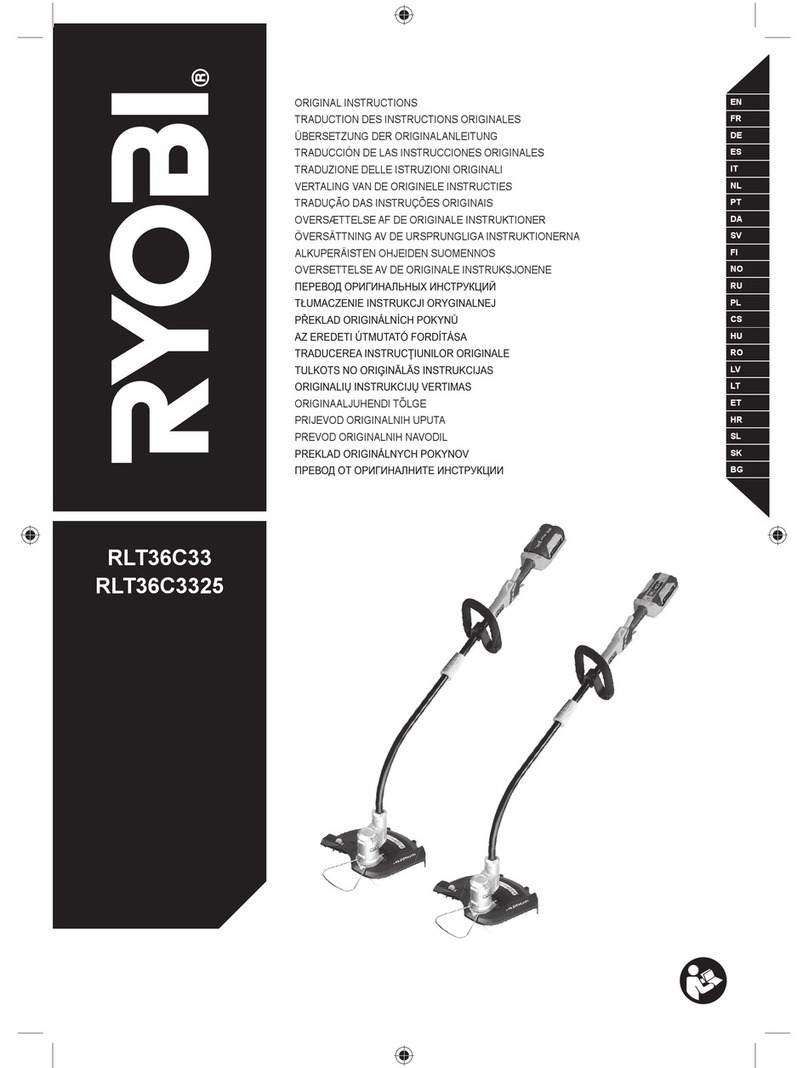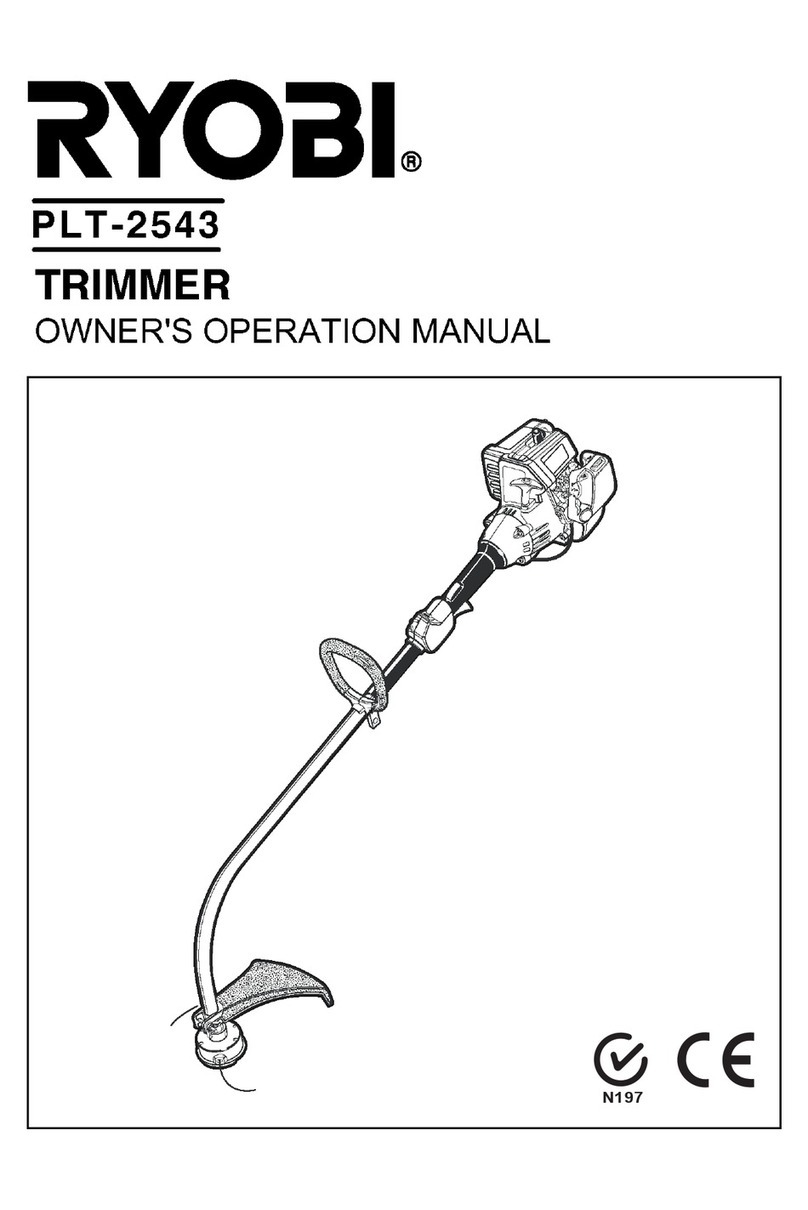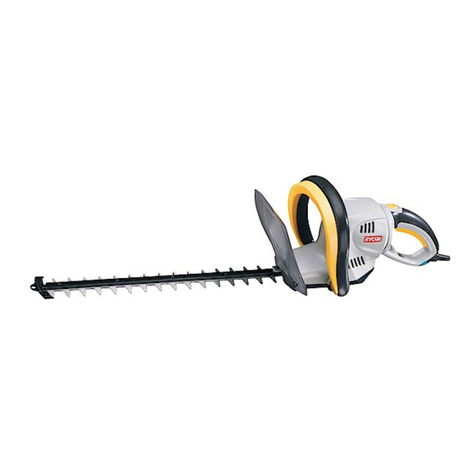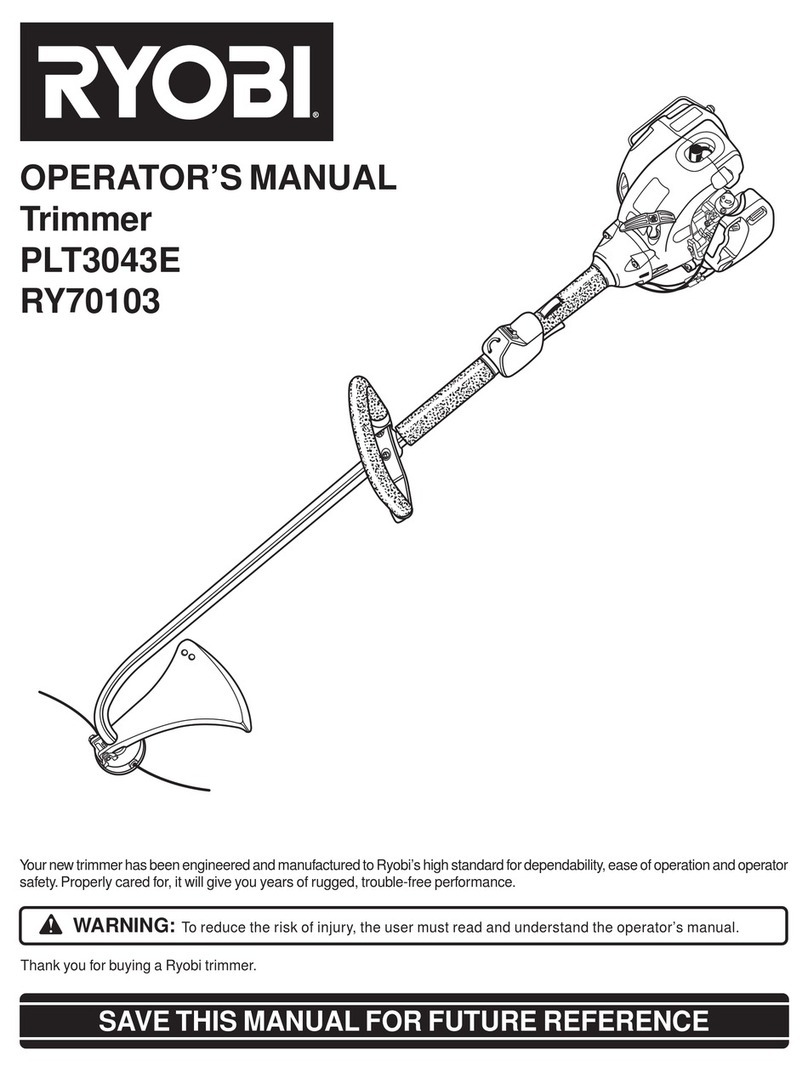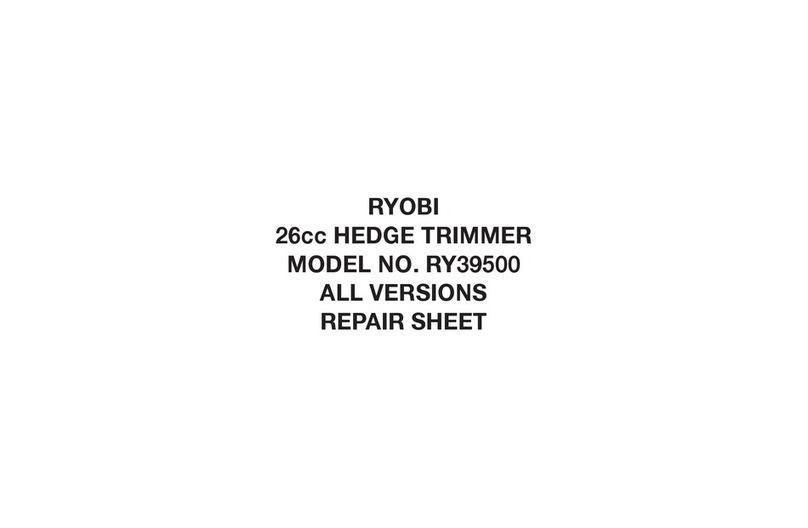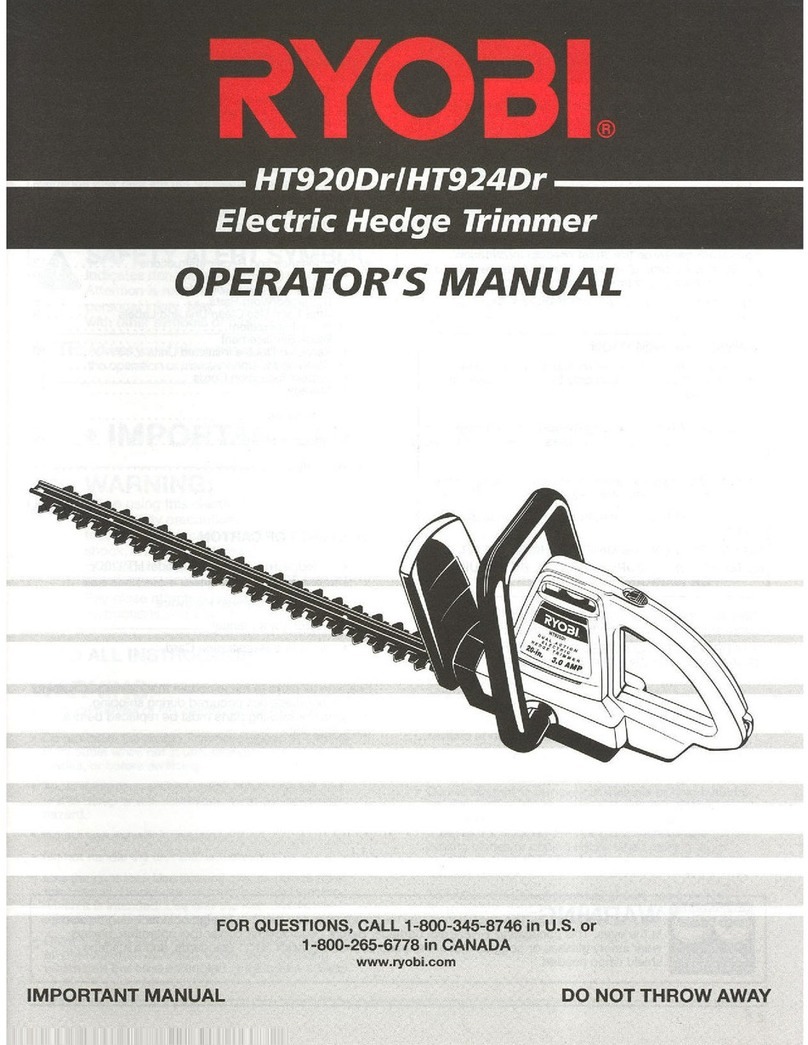2
English
Thank you for buying a Ryobi trimmer/brushcutter.
Your new trimmer/brushcutter has been engineered and
manufactured to Ryobi’s high standard for dependability,
ease of operation, and operator safety. Properly cared for,
it will give you years of rugged, trouble-free performance.
WARNING
To reduce the risk of injury, the user must read
and understand the operator’s manual.
WARNING
Do not attempt to operate this trimmer/brushcutter
until you have read thoroughly and understood
completely all instructions, safety rules etc
contained in this manual. Failure to comply may
result in accidents involving fire, electric shock
or serious personal injury. Save operator’s
manual and review frequently for continuing safe
operation, and instructing others who may use
this tool.
READ ALL INSTRUCTIONS.
GENERAL SAFETY RULES
nFor safe operation, read and understand all
instructions before using the trimmer/brushcutter.
Follow all safety instructions. Failure to follow all
safety instructions listed below, can result in serious
personal injury.
nDo not allow children or untrained individuals to use
this unit.
nNever start or run the engine in a closed or poorly
ventilated area; breathing exhaust fumes can kill.
nClear the work area before each use. Remove all
objects such as rocks, broken glass, nails, wire,
or string which can be thrown or become entangled in
the string head or blade.
nWear full eye and hearing protection while operating
this unit.
nWear heavy long pants, boots, and gloves. Do not
wear loose fitting clothing, short pants, jewellery of
any kind, or use with bare feet.
nSecure long hair so it is above shoulder level to
prevent entanglement in any moving parts.
nKeep all bystanders, children, and pets at least 15 m
away.
nDo not operate this unit when you are tired, ill, or
under the influence of alcohol, drugs, or medication.
nDo not operate in poor lighting.
nKeep firm footing and balance. Do not overreach.
Overreaching can result in loss of balance or
exposure to hot surfaces.
nKeep all parts of your body away from any moving part.
nDo not touch area around the muffler or cylinder of
the trimmer/brushcutter, these parts get hot from
operation.
nAlways stop the engine and remove the spark plug
wire before making any adjustments or repairs except
for carburetor adjustments.
nInspect the unit before each use for loose fasteners,
fuel leaks, etc. Replace any damaged parts before use.
nThe string head or blade will rotate during carburetor
adjustments.
nIt has been reported that vibrations from hand-held
tools may contribute to a condition called Raynaud’s
Syndrome in certain individuals. Symptoms may
include tingling, numbness and blanching of the
fingers, usually apparent upon exposure to cold.
Hereditary factors, exposure to cold and dampness,
diet, smoking and work practices are all thought to
contribute to the development of these symptoms.
It is presently unknown what, if any, vibrations or extent
of exposure may contribute to the condition. There are
measures that can be taken by the operator to possibly
reduce the effects of vibration:
a) Keep your body warm in cold weather. When
opera-ting the unit wear gloves to keep the hands
and wrists warm. It is reported that cold weather is
a major factor contributing to Raynaud’s Syndrome.
b) After each period of operation, exercise to increase
blood circulation.
c) Take frequent work breaks. Limit the amount of
exposure per day.
If you experience any of the symptoms of this condition,
immediately discontinue use and see your physician
about these symptoms.
nKeep the tool well maintained, fasteners tightened
and worn parts replaced.
nMix and store fuel in a container approved for fuel.
nMix fuel outdoors where there are no sparks or flames.
Wipe up any fuel spillage. Move 9 m away from
refueling site before starting engine.
nStop the engine and allow to cool before refueling or
storing the unit.
nAllow the engine to cool; empty the fuel tank and
secure the unit from moving before transporting in a
vehicle.
